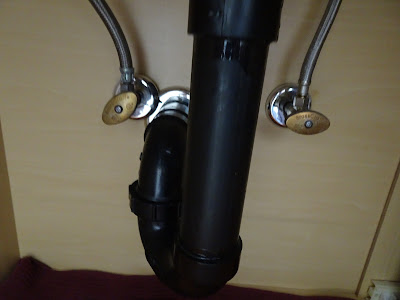Eastern State Penitentiary, located at 2027 Fairmount Avenue, Philadelphia, Pennsylvania, was operational from 1829 to 1971. The property was abandoned through the 1980s while the city of Philadelphia considered various redevelopment plans. The Eastern State Penitentiary Task Force successfully halted redevelopment in 1988, and the prison opened to the public for historic tours in 1994. The prison is a U.S. National Historic Landmark, and it is open for tours every single day of the year from 10:00 a.m until 5:00 p.m. I visited using a museum pass, one of many free passes available from the Burlington County Library.
Eastern State was the first true penitentiary in the United States - a place where people were not physically punished (whipping, for example), but where they were separated from society and from their fellow prisoners. They served out their sentences in separate cells. Prisoners didn't speak to each other. They did not work together or take meals in a common dining room. Silence was so important that guards wore socks over their shoes to muffle their footsteps. This quiet, solitary existence, brainchild of reforming Quakers, was supposed to help offenders reflect, repent, and reform. No one knows if the system worked because, during the years that the prison operated under this "Pennsylvania System" of separation, there was no record keeping concerning rates of recidivism. Many people thought the Pennsylvania System merely traded physical tortures for mental tortures.
 |
| This impressive wall is 30 feet high and extends another 10 feet below ground. A neighborhood group tends the beautiful floral display in the front of the prison. |
 |
| The original floor plan called for seven one story cell blocks radiating like spokes of a wheel from a circular hub. Before the prison was halfway built, it was apparent that it would not be big enough. The plans were altered to add a second story of cells on blocks four through seven. As time went by, additional two story cell blocks were built in the spaces between the original seven until there were fifteen blocks. |
 |
| Cells are 8 feet wide and 12 feet long. The tiny door in the back of the cell leads to an exercise yard. |
 |
| Each cell had a toilet and a cold water tap. There was a rudimentary form of hot water radiant heating. When the prison opened in 1829, even the White House didn't have indoor plumbing or central heating. It turns out that having a toilet wasn't as luxurious as you might think. All toilets flushed at the same time, twice per week, when a prison employee activated the central flushing system. |
 |
| Each cell had a skylight. |
 |
| This cell has been restored to show how it would have looked for the average inmate. Al Capone was incarcerated at Eastern State Penitentiary for seven months in 1929. Prison officials allowed Capone to decorate his cell with luxurious furnishings, artwork, expensive rugs, and a radio. Renovations of Capone's cell are not completed, so I didn't see it. |
 |
| Cell Block 4. |
 |
| Sentences then were both harsher and more lenient than sentences now. A first time offender might be sentenced to a two year term for stealing a small sum while a murderer got only 8-10 years. There were no life sentences. I suppose execution rather than incarceration was the way it went in the early 1800s. |
 |
| Each cell had a tiny exercise yard in the back, eight feet wide, like the cell. Prisoners were allowed to garden and keep pets in their exercise yards. |
 |
| The Philadelphia skyline is visible over the walls. |
Read more about it:
https://en.wikipedia.org/wiki/Eastern_State_Penitentiary
https://solitarywatch.org/2010/02/27/charles-dickens-on-solitary-confinement-immense-torture-and-agony/
https://www.easternstate.org/explore/exhibits/al-capones-cell
https://www.easternstate.org/press-room/press-releases/numbers-2017























